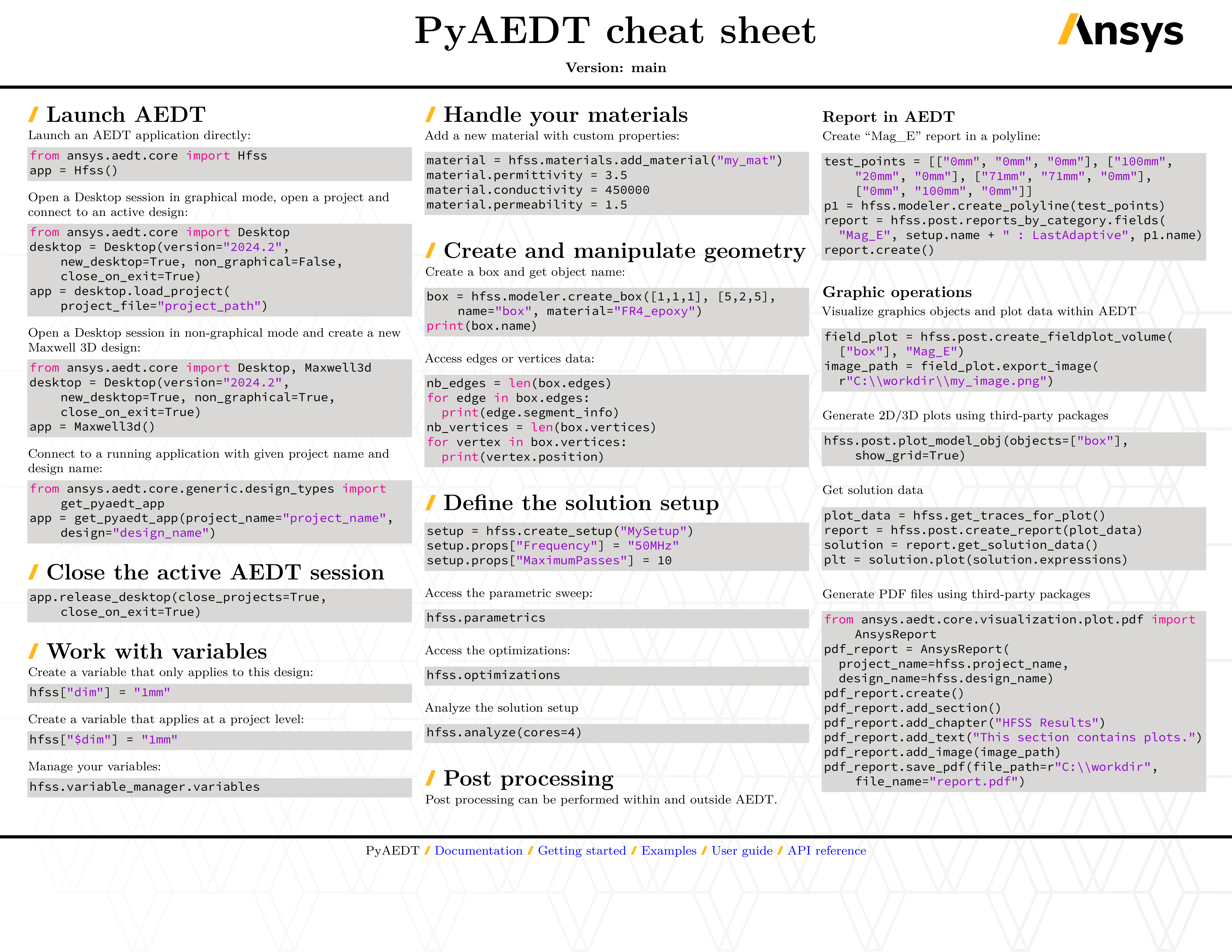PyAEDT documentation 0.23.0#
Useful links: Installation | Source Repository | Issues | Extensions

PyAEDT is a Python client library that interacts directly with the Ansys Electronics Desktop (AEDT) API, enabling straightforward and efficient automation in your workflow.
Note
Expected breaking changes with version 1.0 If you want to know more about the breaking changes expected in the incoming version 1.0, see the Breaking changes in release 1.0.
Note
Also consider viewing the PyEDB documentation. PyEDB is a Python client library for processing complex and large layout designs in the Ansys Electronics Database (EDB) format, which stores information describing designs for AEDT.
New to PyAEDT? This section provides the information that you need to get started with PyAEDT.
This section provides in-depth information on PyAEDT key concepts.
This section contains descriptions of the functions and modules included in PyAEDT. It describes how the methods work and the parameters that can be used.
Explore examples that show how to use PyAEDT to perform different types of simulations.
Learn how to contribute to the PyAEDT codebase or documentation.


